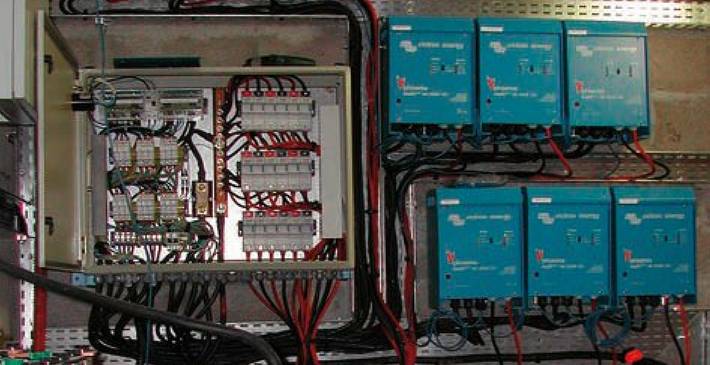
Sizing of an off-grid system requires modelling of the expected output from the renewable energy system, and of the load that the system must meet.
The three key variables are as follows:
In addition the battery voltage must be compatible with the charger.
Renewable energy generation is by nature intermittent, and the battery storage system and / or generator must be sufficiently large to cover the times when the generation is unable to meet the load. Typically the generator output (kW) is sized to cover peak load, and thus it serves as a full power back-up.
The renewable energy system and battery storage can either be sized to reduce the contribution of the back-up generator below a certain minimum (e.g. 10% of annual load), or it can be optimised to minimise the lifetime cost per kWh.
There are established models which can be used to estimate the hourly output of a solar PV or wind generator in a given location. For solar, the model should include shading analysis to establish the impact of any shading. For wind, the model must be very localised, taking into account average wind speed, prevailing wind directions, and seasonal variations.
Note that wind and sun are generally complementary (high winds and low sun in winter) and so, depending on location, it may be advisable to combine both.
If the renewable energy system is ‘over-sized’ it will need to be powered down in favourable conditions (wind or sun) as there may be nowhere for the full output to go (e.g. if the battery is already full). There is a balance between how often the system has to power down due to ‘over-sizing’ in favourable conditions and how often the generator has to be used due to ‘under-sizing’ in unfavourable conditions.
Modelling of the loads requires a systematic exercise of listing all of the loads (dc and ac), including running currents and start-up currents.
An ‘hourly profile’ should then be built up for each load, to give an average consumption by hour. Consideration should also be given to the peak load if all key loads are run together.
For residential off-grid systems, see Residential Load Considerations.
Copyright © Spirit Energy 2026 · info@spiritenergy.co.uk · 0118 951 4490
Jobs and Careers
Interested in joining the Spirit team? Email jobs@spiritenergy.co.uk
Spirit House, 25 Albury Close, Reading, RG30 1BD
(Location formerly known as 44 Portman Road, Reading, RG30 1EA)
Spirit Energy is the trading name of Spirit Solar Ltd · UK Company Number 07138647
Although care is taken to ensure that the information on our website (www.spiritenergy.co.uk) and any guides, calculators or checklists provided by us, electronically or otherwise, are accurate and up-to-date, we cannot accept any responsibility for mistakes or omissions. We enter into no express or implied conditions, warranties, terms or representations regarding the quality, accuracy or completeness of the information. We exclude to the extent lawfully permitted all liability for loss or damage, whether direct, indirect or consequential arising out of your use of our website or any guides, calculators or checklists provided by us, or from any information or omission contained in our website or any guides, calculators or checklists provided by us.